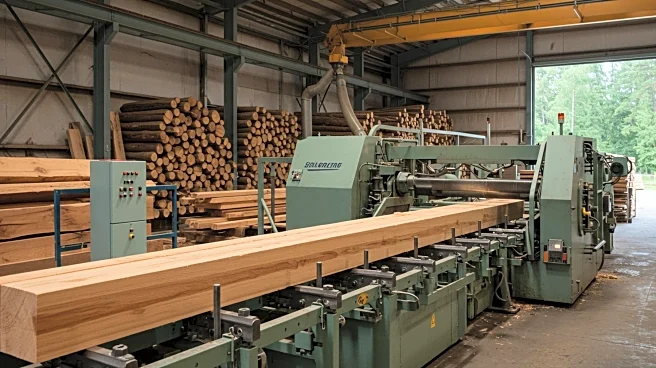What is the story about?
What's Happening?
Mark Carney's Build Canada Homes initiative is addressing Canada's housing crisis by proposing the construction of 500,000 new homes annually. This initiative is not only a response to the housing shortage but also a strategy to reduce greenhouse gas emissions from the construction sector. The plan emphasizes the use of cross-laminated timber (CLT) and modular construction methods, which are more sustainable compared to traditional concrete and steel. The initiative includes low-cost loans, equity support, and pre-approved design templates to streamline the building process. The goal is to establish a stable demand for modular and CLT factories, ensuring continuous production and reducing construction time and costs.
Why It's Important?
The initiative is significant as it addresses two major issues: the housing crisis and climate change. By promoting the use of CLT, the initiative aims to cut embodied carbon emissions by 15% to 40%, contributing to Canada's climate targets. The plan also seeks to stabilize the housing market by providing a consistent demand for modular construction, which can lead to faster and more cost-effective housing solutions. This approach could transform the construction industry, creating a new manufacturing sector that provides stable jobs and supports regional economies. The initiative's success could serve as a model for other countries facing similar challenges.
What's Next?
For the initiative to succeed, Canada needs to establish between ten and twelve regional factories dedicated to CLT and modular housing by 2030. These factories would need to produce at least 50,000 cubic meters of CLT annually to meet the housing targets. The government must ensure that financing and regulatory frameworks are in place to support this industrial shift. Additionally, workforce development programs are necessary to train technicians and assembly line workers required for modular construction. The initiative's progress will depend on the collaboration between federal and provincial governments, private developers, and Indigenous partnerships.
Beyond the Headlines
The initiative could lead to a cultural shift in how housing is perceived and constructed in Canada. By prioritizing sustainable materials and methods, it challenges traditional construction norms and encourages innovation in the industry. The success of this initiative could also influence global construction practices, promoting the adoption of mass timber and modular methods as viable solutions to housing and environmental challenges.
AI Generated Content
Do you find this article useful?












